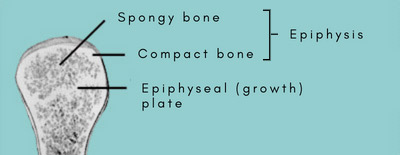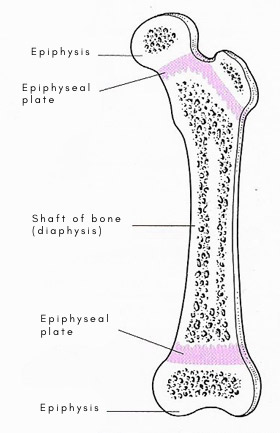epiphysis

The epiphysis is the sponge-like head of a long bone, such as the femur or humerus. The ends of epiphyses are covered with a hyaline cartilage and form the articulating surfaces at joints.
While bone growth (lengthening) is taking place, the epiphysis is separated from the bone shaft by the epiphyseal plate or growth plate – the region in which new bone is laid down. In this time of bone growth, older cartilage gradually ossifies (becomes bone) in the area next to the shaft, while new epiphyseal cartilage continues to form in the area next the plate.
Bone growth in length is stimulated by the production of growth hormone, which is secreted by the anterior pituitary gland.
When the epiphyseal area is completely replaced by bone tissue, the bone ceases to grow in length, the plate disappears, and the head and shaft are united. Normally, in humans, such growth is completed at about age 25.
 |
| Each epiphysis is located at an end of a long bone and is separated from the shaft of the bone by the epiphyseal plate. |


